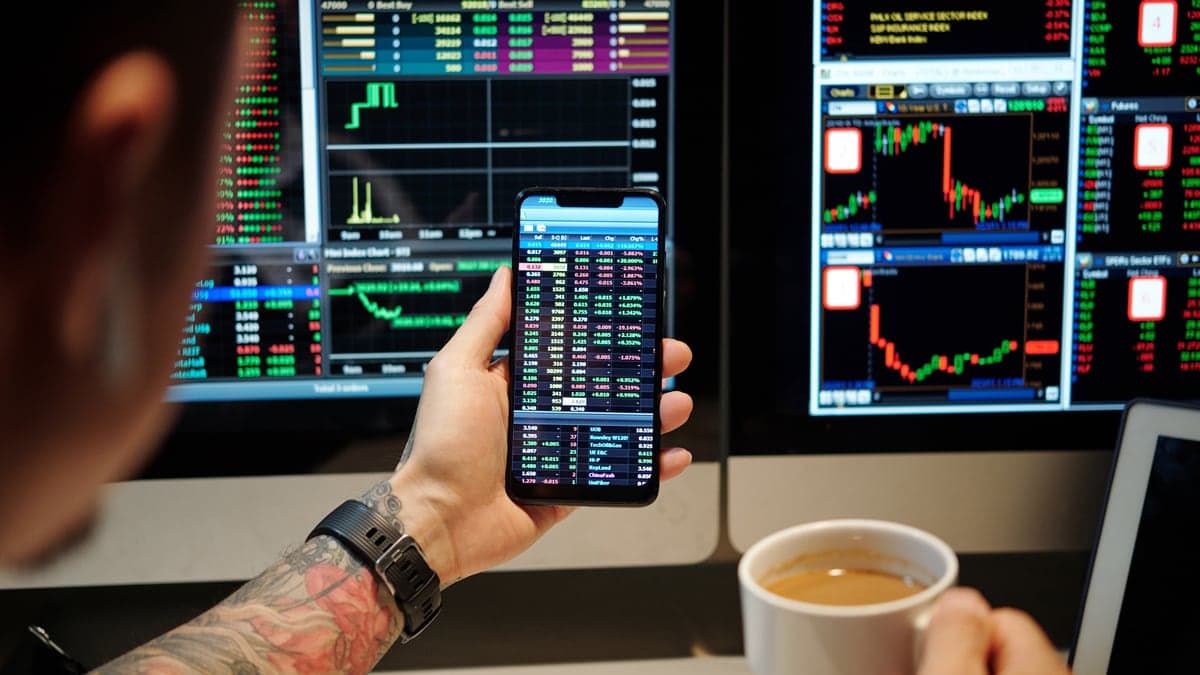Your money is always at risk when you invest. Every investor wants to make money, but the markets are unpredictable, and share prices can rise or fall, which means you may get nothing back or less than you put in.
The best investment plans involve ways of reducing the risk of losing money.
One debate that has been raging for years is the active vs passive debate about the best way of hedging risk.
The argument is whether investing in indexed trackers is better than opting for managed funds. Although experts and analysts from both sides try to prove their opinion is best, the data is clear cut – trackers beat the returns from most managed funds over the long term.
Table of contents
For investors, the issue is not choosing active or passive strategies but which tracker funds are best.
The danger is that most funds will take their fees from your investments regardless of how they perform, which is why financial firms say, “Past performance is no guarantee of future results.”
What Is A Tracker Fund?
A tracker fund, sometimes called an index fund, mirrors or tracks the price movements of an asset or a group of different assets.
Typically, these assets are stock indices, such as the London Stock Exchange’s FTSE100 or Wall Street’s NASDAQ. The funds can also track commodities, cryptocurrencies and currencies.
The funds aim to replicate the holdings and performance of the designated index, exposing investors to the entire index while keeping costs low. Most trackers are automated, so they do not need expensive staff like fund managers or analysts.
What Is A Managed Fund?
A managed fund is an investment vehicle with a professional fund manager and a team of analysts who oversee a portfolio of investments on behalf of investors.
The funds pool money from investors, allowing them to access diverse portfolios and professional management. The fund manager makes investment decisions, such as which stocks to buy and sell, while choosing bonds or other assets, aiming for optimal returns for investors.
What’s The Proof Trackers Are Best?
One of the most cited research collections on active vs. passive investment is the Standard & Poor’s Indices Versus Active Funds (SPIVA). SPIVA has examined funds in the US, Europe, and many other major markets for two decades.
SPIVA data confirms that funds return 75 per cent to 85 per cent less than their benchmarks over ten years.
Separate research from UK investment platform AJ Bell reveals that 91 per cent of pension funds have generated worse returns than trackers shadowing the FTSE All-Share Index for the past ten years.
Most have underperformed the FTSE by 10 per cent, with a third lagging by more than 20 per cent. The worst only managed a 13 per cent return.
The numbers vary across specific fund sectors, but time and again, the message is loud and clear across all regions and company sizes.
A tracker will lag its benchmark because of the fund’s running costs, but SPIVA and other research on the topic across the past few decades agree that the average index tracker will outperform the average managed investment fund.
Why Do Trackers Beat Managed Funds?
Managed funds are the market as collectively, their investments are held in the same proportions as a tracker.
Before considering costs, investors would expect a managed fund and a tracker to generate a similar return.
However, when fund costs are taken into account, two key differences emerge.
Firstly, managed funds charges are much higher than those of trackers. A typical managed fund charges around 1 per cent a year, whereas the average tracker is nearer 0.2 per cent. This difference sounds small, but it compounds each year, giving trackers a huge cost advantage over the long term.
Secondly, managed funds buy and sell their underlying investments more frequently. A typical UK fund churns around half of its holdings each year — so portfolio turnover is around 50 per cent. Dealing costs and stamp duty associated with these transactions are a financial handicap for managed funds. Trackers tend to have a yearly portfolio turnover of less than 20 per cent.
Spotting The Best Managed Funds
Spotting the best managed funds takes work. Investors can look at past performance and pick those with the highest returns, but there’s no guarantee the fund manager can repeat the success.
Replicating a good performance can fail for many reasons.
For instance, the fund manager has retired or moved on, and their replacement isn’t quite up to scratch.
Often, the profits were generated when the fund was small. That performance attracted investors’ attention, but now that the fund is larger, the manager finds matching the same performance harder.
SPIVA suggests that larger funds invested in their domestic market rather than overseas tend to perform better.
Buying Tracker And Managed Funds
Buying funds is quick and easy thanks to the introduction of online investment platforms that are replacing brokers.
Nowadays, set up an account, log in, and you are ready to invest.
Most platforms have lists of funds that customers can search. The lists will include information about the fund, performance data and price information.
Just click, set how much you are investing, pay and check out.
Funds are priced and traded once a day. Your order is pooled with any from other customers and processed as a single batch, generally overnight.
Some platforms have stock picks or special deals but don’t consider them unless they are especially appealing, as the platform and fund manager may have a tie-in that makes the deal more attractive to them than investors.
How to sell funds
Selling an index or managed fund is as simple as buying one. You log into your platform, choose what to sell and send the instructions.
Again, the fund is only priced and traded once a day.
Related Information
Below is a list of related articles you may find of interest.
